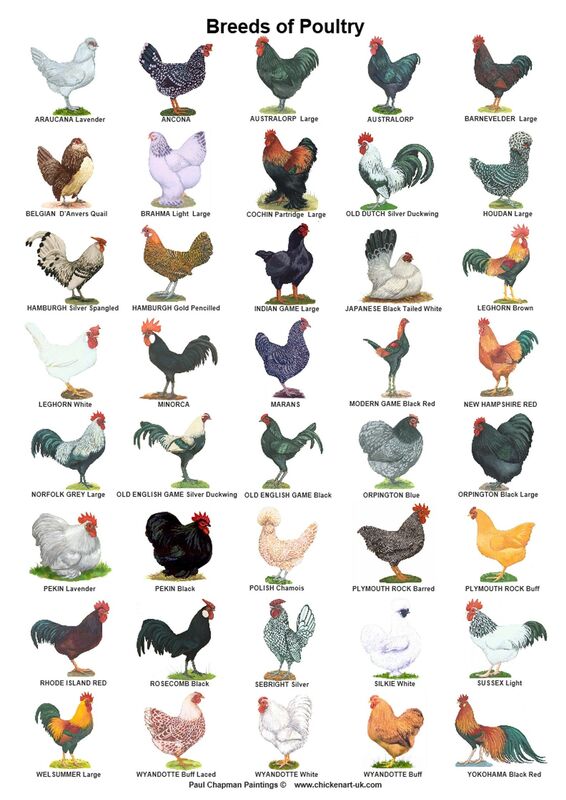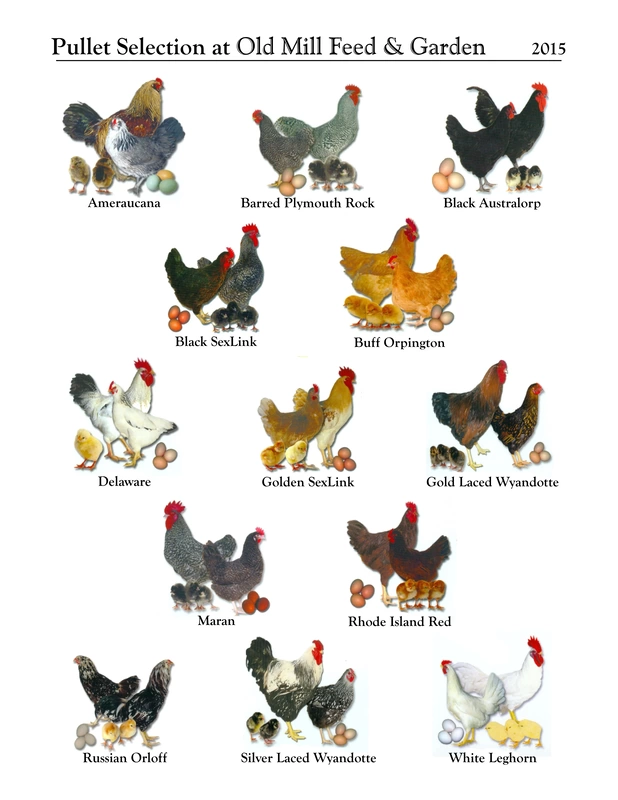CHICKENS
- Alektorophobia is the fear of chickens. It is from the Greek words alektor (cock) and phobos (fear).
- When a chicken picks up a piece of food and rubs it on the ground to break off small pieces, it's called "beak beating."
- A hen, especially a fussy one, is also known as a biddy.
- Usually, chickens with white earlobes lay eggs with white shells. Chickens with red earlobes lay eggs with brown shells.
- Similar to humans, chickens can recognize and discern people based on their facial features. And, similar to humans, chickens prefer symmetrical or attractive faces.
- Modern chickens descended from the red jungle fowl of Southeast Asia about 8,000 years ago.
- Chickens can see colors better than humans can, thanks to a mosaic of interwoven receptors in their eyes. This extra sensitivity to light may help chickens find a mate or find colorful berries and fruit.
- Chickens have their own system of communication. They can create at least 30 different calls, and hens even start softly clucking to their chicks while they are still in the egg.
- Chickens dream. Along with humans and other mammals, chickens experience REM sleep. They also have another phase of sleep that humans don't have, known as USWS, or unihemispheric slow-wave sleep. This allows them to sleep with one eye open to watch for predators.
- Hens evaluate a rooster based on the size and color of his comb and wattle. The more red and large both are, the more likely the hen will be interested.
How often have I desired to gather your children together as a hen gathers her brood under her wings?- Jesus Christ
- Hens will mate with several roosters within a short period of time, and they have the ability to eject the sperm of inferior roosters.
- Chickens have telescopic eyesight and nearly 360-degree vision.
- Globally, chickens outnumber humans 3 to 1.
- Chickens, especially hens, do have feelings. Mother hens experience stress when their chicks are stressed or injured. They also exhibit signs of mourning and depression when another chicken in the flock dies.
- Chickens develop relationships and have friends; scientists believe they can even love
- Light triggers the formation of an egg, and a chicken needs 14–16 hours of light a day to lay eggs. They usually lay eggs between 7:00 am and 11:00 am.
- There are about 26 billion chickens in the world which is more than humans.
- Chickens form complex social hierarchies known as pecking orders.
- The closest living relative to a T-rex is the chicken.
- An Israeli geneticist created a featherless chicken by crossing a naturally bare-necked chicken with a regular broiler chicken. Scientists note that the new chicken is lower in calories, environmentally friendly, easier to process, and faster growing.
- Bantam chickens have black bones and black skin.
- Mike the Headless Chicken lived for 2 years after a farmer cut off its head.
- When a chicken is happy and feels safe, it will often "purr." Also called "trilling," the sound is a repetitive and low verbalization.
- Chickens can remember up to 100 faces. They can also communicate negative or positive experiences they've had with someone to other members of their flock.






